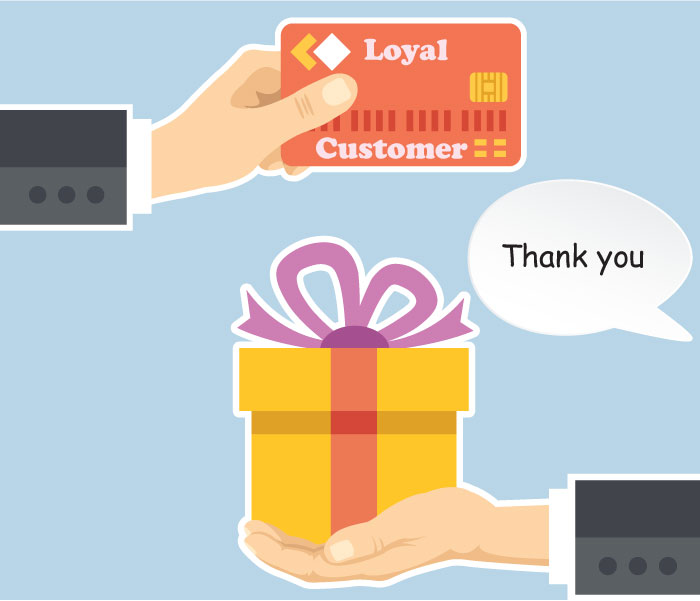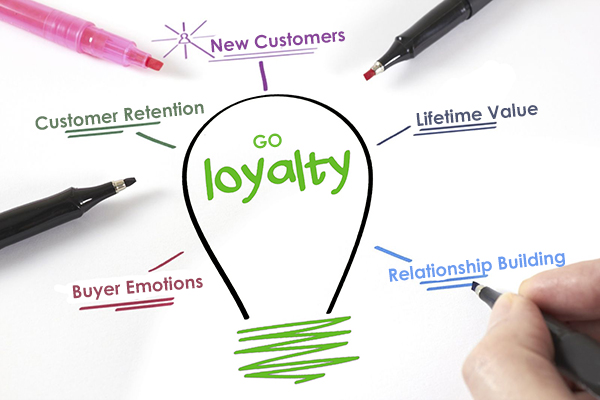Customer Loyalty Programs: Will they benefit my business?
Have you ever wondered how much it costs to a business to acquire a new customer compared to the costs for selling to an existing one?
Harvard Business Review indicated that it costs about 5-25 times more to acquire a new customer than it does to sell to existing ones. Not only that, but existing customers spend 67% more than new customers.
Therefore, customer loyalty really pays off!
While considering the above numbers, every business needs to think about what they are doing to keep customers coming back to them.
In a nutshell, customer loyalty reflects a customer’s willingness to buy from a certain brand again and again, and this is the result of positive customer experience, customer satisfaction and the value of the products/ services a customer receives from a transaction. If you want to know more about customer loyalty and its meaning, you may click here.
Since it is evident that it costs more to acquire new customers than to retain existing ones, the idea of mobilizing and activating loyal customers to recruit new ones, by simply evangelizing a brand, should be an exciting thing for marketers, salespeople and the customer success teams. To execute this idea, businesses will need a Customer Loyalty Program.
What is a Customer Loyalty Program?

According to Nielsen, Customer Loyalty Programs are “marketing programs that reward members with purchase incentives”. These programs track purchase behavior and reward customers for their loyalty to a brand. The premise here is very simple: the more customers shop and spend, the more they will receive in return.
Customer Loyalty Programs indicate a relationship between a brand and a customer. These programs are a way of rewarding your repeat customers and encourage them to stay loyal. Rewards may include free merchandise, rewards, coupons, or even advanced products. However, a good loyalty program is not just about rewards, rather it is a channel through which a brand can strengthen customer relationships.
In fact, Nielsen found that 84% of consumers are more likely to choose businesses that offer customer loyalty programs and, 59% stated that these programs are available where they already shop.
Do you know the goals of a Customer Loyalty Program?
The primary goal of a customer loyalty program is customer retention. Another important goal of these programs is data collection. Demographic, behavioral and purchase data can be used to create personalized and targeted marketing campaigns which will result in sales increase. With this kind of data on purchasing behavior, it is easier to segment customers, create customer personas and obtain insights to help in the creation of new incentives. Nonetheless, data analysts and marketers must be very cautious when collecting customer data as what might seem as personalization to the marketer might be perceived as an invasion of privacy by the customer.
Benefits of Customer Loyalty Programs

Customer loyalty programs can be very beneficial for every business no matter size or industry.
As already mentioned above, engaging existing customers could cost less and create more benefits for your business in the long run.
“The success of a brand doesn’t merely depend on the value of a customer’s single purchase; rather, it’s about the values the customer offers over its lifetime” (Ankit Runwal, marketing specialist at Social Annex).
Let’s take a deep dive into the benefits of customer loyalty programs!
Customer referrals are one of the biggest benefit of these programs. According to the Bond Loyalty Report, 73% of members are more likely to recommend brand with good loyalty programs.
Another benefit of a well-implemented customer loyalty program is Customer Satisfaction. As long as the rewards and incentives offered are of value to your customers, they will in return feel appreciated and grateful towards your business. Thus, a strong emotional bond will be present between your business and your loyal customers.
Effective loyalty programs are able to increase customer lifetime value and ROI (Return On Investment), as many consumers modify spending amount to maximize points and get the reward you are offering them. Therefore, the members of your loyalty program are likely to spend more during each visit to your e-shop or offline store. Repeat customers can create a steady flow of traffic which creates a steady stream of income and as your loyalty program grows the more predictable retail sales numbers become.
Conclusion
It is important to have in mind that a customer loyalty program goes beyond rewards. According to Schneider “customers will remember their experience with a brand long after they’ve forgotten a discount. Companies cultivate true customer loyalty by making customers’ lives easier and making sure each engagement – whether in person or in app- is valuable for them”.
Want to know more about Customer Loyalty? You may also read:
- What about Customer Loyalty?
- Customer Loyalty Playbook: 10 things you should do!
- The 4 steps you should take while creating a Customer Loyalty Program
- 8 Types of Customer Loyalty Programs!
- Is your loyalty program effective?

Also published on Medium.